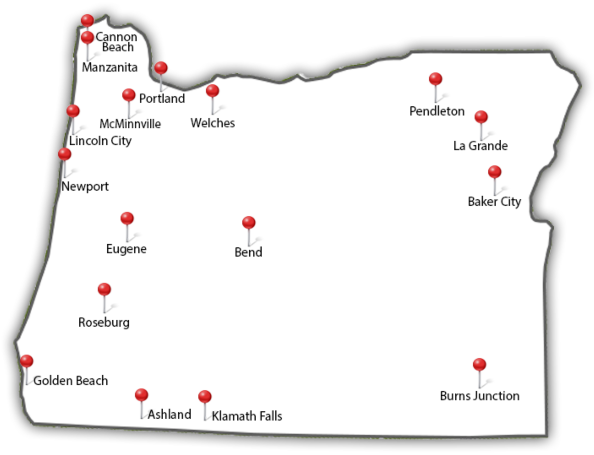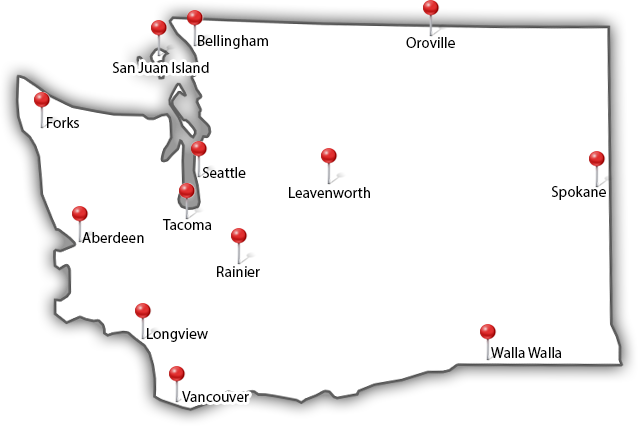Protecting Your Home From Wildfire
Every year, with more drought and rising temperatures, we are experiencing more wildfires. Wildfire can spread unexpectedly to tens of thousands of acres in a matter of hours, leaving homeowners with little time to prepare their property for the oncoming disaster.
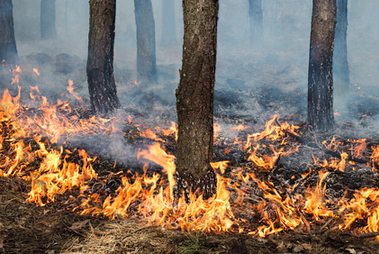 Yet there are several simple steps that you can take to prepare your home and property to withstand raging wildfires. Careful planning and yearly maintenance could mean the difference between a singed yard and a completely destroyed home and property.
Yet there are several simple steps that you can take to prepare your home and property to withstand raging wildfires. Careful planning and yearly maintenance could mean the difference between a singed yard and a completely destroyed home and property.
This post will teach you how to create a fire resistant landscape around your home to help protect your property from wildfires.
Defensible Space
Defensible space is “the natural and landscaped area around a structure that has been maintained and designed to reduce fire danger.”
According to the USFA, “Dead trees and shrubs surrounding your home act as fuel for fire.” Creating a buffer or safe zone around your home free of flammable vegetation can help stop a fire from burning close to your house.
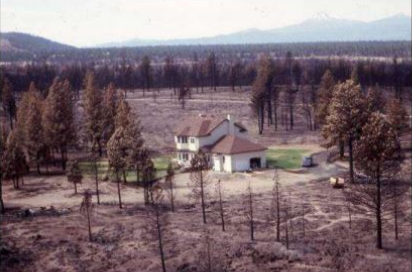
Image: OSU Extension Services
Removing dead trees, shrubs, excess leaves, and grass clippings within at least 30 feet of your home will greatly reduce fuel for a fire. Prune away branches that are very close to your home, as well as, any low hanging branches that can easily ignite in a brush fire.
Incorporating a firebreaks is also another great way to create defensible space. A ‘fire break’ is a landscape feature that can stop the advancement of a fire. Common fire breaks can be; stone walls, gravel paths, swimming pools, driveways, and even well maintained lawns.
Every home in an area prone to wildfire should create a defensible space plan for the property.
Fire-resistant plants
No plant is fire-proof, but some plants that have higher moisture levels and low sap content are much less likely to ignite during a fire.
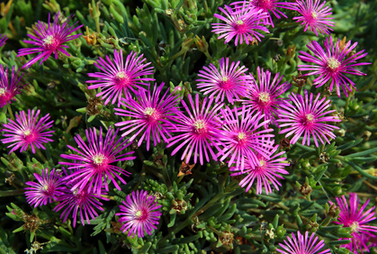
Iceplant
Hardwood trees like cherry, maple, and poplar are much less flammable than conifers like pine and fir. Planting turf grasses, shrubs and ground cover within a 30-foot area around your home can help stop fire from burning close to your home. OSU Extension Services recommends planting shrubs that are “low-growing with minimal dead material.” Other landscape plants that readily resist ignition are rockrose, iceplant (pictured right), and aloe.
Read this article from the OSU Extension Service on Landscaping With Fire-Resistant Plants for a more complete list of fire-resistant landscaping and how to properly plan a fire-resistant landscape.
Maintain Your Property
Creating a defensible space and planting fire-resistant plants are both very important aspects of protecting your home from wildfire. But without consistent maintenance, much of your hard work and planning might still not be enough to stop a raging wildfire.
Make sure to consistently prune and water your landscape. Keeping your plants healthy and green, even during the dry season, will lower their chances of burning. Also, keeping flammable materials like gasoline and firewood stored in metal containers or sheds at least 30 feet from your home can remove much of the potential fuel for a fire.
Creating and carrying out a fire plan for you home and landscape is incredibly important. With planning and maintenance, you can save yourself immense heartache and expensive restoration by avoid the dangers of wildfire.
Hiring an ISA Certified Arborist® and master gardener to help you plan and install your landscaping will help ensure that you use the latest techniques and receive expert advice when making your fire plan. The professionals at Northwest Arbor Culture, Inc. can help you protect your home from fire while creating a beautiful landscape for you to live in. Contact us today for all of your tree and landscaping needs.
Have you prepared your home for the threat of wildfires? Tell us how you are protecting your home in the comments section.
blog comments powered by Disqus






